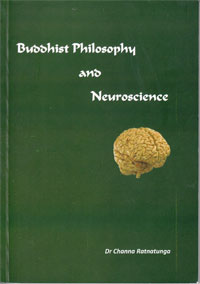Proving that liberation and enlightenment in Buddhist philosophy are “evidence-based”
View(s):In the early 1980s, during my undergraduate days, Professor Carlo Fonseka, the then Professor of Physiology at the Faculty of Medicine Colombo, started his lecture series on neurophysiology by asking two questions which he then proceeded to answer himself. What is matter? Never mind! What is mind? No matter!! Although these appeared to invoke humour, it is a succinct explanation of philosophical materialism and idealism. Materialism says that matter came first and that matter is all there is. Idealism says that in the beginning was mind and matter derived from mind.
Modern western medicine, that is widely taught and practiced in Sri Lanka today, works on the basis that the human body is a material system that obeys the laws of physics and chemistry to the letter and that factors in explainable by such laws are irrelevant. Therefore, neuroscience, a branch of medical science that deals with the brain and nervous system too will accept only the principles that can be experimented and verified in a research setting. Anything that cannot be explained and tested in the materialistic world will be classified under Psychological medicine rather than neuroscience. Implicitly, therefore modern medicine and neuroscience works on the premise that the physical facts about the body can account for all the facts about it.

Book facts Buddhist Philosophy and Neuroscience- by Channa Ratnatunga Price: Rs 800.00 Available at Buddhist Publication Society and Sarasavi Bookshops Reviewed by Anuruddha Abeygunasekera
In his latest book, Channa Ratnatunga (CR), the Emeritus Professor of Surgery, University of Peradeniya, with his decades of practicing western medical science too tries to obey this rule by collecting all the latest research findings of neuroscience that would try to prove that Buddhist philosophy explained many centuries ago is verifiable and hence true. The book titled ‘Buddhist Philosophy and Neuroscience’ will hugely attract those who have been educated to believe that what can be proven in a laboratory or a research setting is the truth and only the truth. Though this notion is very likely to be inaccurate and unwise, given the problems faced by the present world and its inhabitants, the attempt should be applauded and encouraged as it may lure some of them to practice the genuine pathway to liberation. Else only a tiny percentage of the world population will accept and follow the Dhamma explained by the Buddha to end the suffering faced by the individual.
In the book, CR clearly sets out the aim of his endeavor – ‘To understand the background science that may underlie the process, before we attempt to experience it’. And he hopes his book with proven evidence will persuade the readers to try out the path and seek the truth. Furthermore, CR clearly understands the difference between proving the facts in the research setting vs. the experiential knowledge that one gets through meditation and by “seeing” him/herself for which you do not need a sophisticated laboratory but only your own body and mind. Hence in the prologue CR stresses that ‘this is not the book for a person who wishes to experience the process leading to enlightenment without focusing on the evidence-based data that underpin the process’.
Neuroscience is the section of medicine that every medical undergraduate finds most difficult to understand. Therefore, CR has taken great efforts to explain the relevant basics of neuroscience in a simple and palatable way, even to the non-medical reader. There are a large number of pictures and diagrams to help explain his conclusions. The book having only 151 pages makes it easy reading, though readers will surely have to read the book several times to comprehend the depth of the principles discussed.
The core of the book is based on the basic concept of neuroplasticity of the brain. CR explains lucidly how the neuroplasticity of the human brain, which is programmed and equipped for survival, and procreation for the sustenance of the genus-species-herd-family (Default Mode Network) can be converted to Central Executive Network which would allow one to see (for?) him/herself the reality like non-self (Anatta). CR has managed to collect and list whatever reliable references presently available to prove this. Every statement and comment in the book is well supported by reliable and recent research findings which can be accessed and verified easily. Being a surgeon and a lecturer for over five decades, CR has shown that he believes only good-quality evidence. If true, this may be the next step in human evolution which appears not to have happened during the last several millennia. All previous steps in evolution were to make the species suitable for survival but this would be to end the species as well as its suffering.
We hear what we want to hear and not what the speaker says. This could be true for the readers of this book as well. However, I hope many, if not all readers of ‘Buddhist Philosophy and Neuroscience’ would comprehend what CR attempts to convey and will be convinced to follow and practice what Buddha describes as the path to end suffering. Finally, CR has proved that path to liberation and enlightenment described in Buddhist philosophy is “evidence-based”, a term the present-day intellectuals consider as the holy grail of science!
Searching for an ideal partner? Find your soul mate on Hitad.lk, Sri Lanka's favourite marriage proposals page. With Hitad.lk matrimonial advertisements you have access to thousands of ads from potential suitors who are looking for someone just like you.


